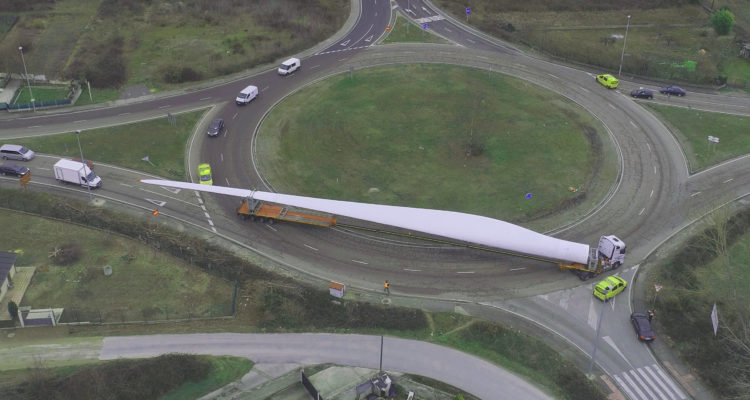Valloir: We would do that recycling with a chemical treatment. You’re going to recover more than 90% of the monomer and all the fiber. You’re going to be able to use that resin again and again, and you’re going to get exactly the same properties as the virgin resin.
We did some life cycle analyses, and with thermoplastic blades made with Elium you can save the carbon consumption of manufacturing by recycling.
This process already works on an industrial level. It’s just a question of scale. To be able to justify the capital investment to recycle this, you’re going to need a big amount of material to keep the plant working.
CM: Can wind blade manufacturers use the same equipment for producing thermoplastic wind blades that they’re using for thermoset blades?
Valloir: They wouldn’t have to change their setups, although they would have to make some adjustments. The equipment to dispense the resins will be different, and the way that Elium polymerizes makes it a shorter process. They’d also need a special mold release. But it would not take huge capital investment to switch from a thermoset blade to a thermoplastic one.
CM: Are there differences in the other materials used for thermoplastic blades?
Valloir: We can work with all the glass fibers on the market. The type of glass fiber really depends on the blade design.
If you don’t have good sizing with this material, then you can have a problem with compaction and delamination. But as long as we use good sizing, there isn’t a problem.
The adhesive used to bond the two shells of the wind blades together was challenging. The requirements for the wind blade are pretty high – they last 20, 30, 40 years – so we had to find a formulation that could make it through all the tests that have to be done for certification. We worked with our sister company, Bostik, and came up with a formulation last August that is specially developed to work with Elium and that can fulfill all the requirements.
CM: What blades has ZEBRA produced so far?
Valloir: We manufactured our first 62-meter blade at the beginning of 2022, and we’re going to do another one at the beginning of this year, using some carbon fiber reinforced thermoplastic parts inside the blade.
There’s a mechanical load in the interior of the blade that has to be sustained, and the type of fiber is a key factor. So they are currently using carbon fiber parts [with epoxy resin] there. But if you want to recycle the entire blade – and that is the idea – you have to make the entire blade with thermoplastics, not only the shells but also the interior parts. So that is challenging.
Another step in the project is going to be to increase the size of the blades to 100 to 120 meters in the future. Because the thermoplastic resin is very similar to an epoxy, we don’t see why we wouldn’t be able to do that.
CM: Are there any thermoplastic blades in use in a wind turbine today?
Valloir: Right now the first blade is still under mechanical evaluation. We have to go through a lot of tests to certify the blade, and the blade manufacturer will have to certify the design with the Elium resin. So it’s going to take a few more months until we can commercially fly the first thermoplastic blade, but we hope that’s within three years.
CM: How do you anticipate the market will react once thermoplastic wind blades can be manufactured at a large scale?
Valloir: It’s up to us as consumers to push really hard for this new technology. If consumers push for more recyclable materials, then I think the market adoption will be pretty quick because we will be changing the paradigm. We also have governments passing legislation on adopting more sustainable materials.
I really expect that we will see the industry change pretty quickly and choose more materials.
Mary Lou Jay is a freelance writer based in Timonium, Md. Email comments to mljay@comcast.net.


